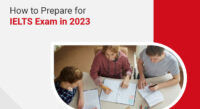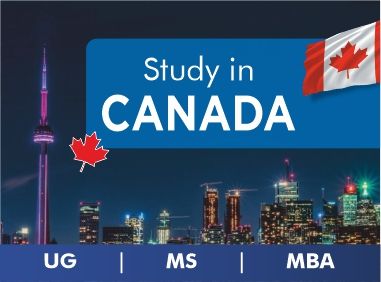
IELTS Exam Syllabus 2024
The IELTS exam is conducted and administered by the British Council, IDP and Cambridge ESOL Examinations for both IELTS Academic and IELTS General Training formats of the Exam. The IELTS is an English Language Proficiency exam that tests the English language ability of people who intend to study or work where English is the language of communication. The exam is a test of the IELTS Listening, IELTS Reading, IELTS Writing and IELTS Speaking skills of the exam taker, as outlined in the IELTS syllabus.
It is to be noted that the Listening and Speaking sections would be the same for IELTS academic and IELTS General Training modules, however, Reading and Writing are different in structure for IELTS Academic and General Training Modules.
IELTS Syllabus 2024
| Section | Number of Questions & Duration | Content | Marks |
| Listening | 4 Recordings
40 Questions 30 Minutes + 10 minutes transfer time |
Four recorded monologues and conversations | 1 mark per question |
| Reading | 40 Questions
60 minutes |
3 Passages (can be descriptive, analytical, factual or discursive) | 1 mark per question |
| Writing | 2 Questions
60 minutes |
Writing task (Minimum 150 words)
Essay (minimum 250 words) |
Each task is assessed independently. The assessment of Task 2 carries more weight in marking than Task 1. |
| Speaking | 3 Questions
11-14 minutes |
Part 1: Q&A
Part 2: Speaking in detail on a familiar topic Part 3: Structure Discussion |
– |
Exam Pattern of IELTS 2024
The IELTS exam has two test-taking variants from which the students can choose depending on their comfortability. As a student, it is important to know the IELTS exam syllabus and IELTS exam pattern of each variant to help one prepare better.
| Exam Variant | Total Duration | Listening | Reading | Writing | Speaking | Conducting Bodies | Score Pattern & Range |
| Paper-Based IELTS Test | 174 minutes | 30 + 10 = 40 (Answer Transfer Time) | 60 | 60 | 11 to 14 | British Council, IDP: IELTS Australia and the University of Cambridge ESOL Examinations (Cambridge ESOL). | 0 – 9 Bands with a possibility of 0.5 band intervals. |
| Computer-Based IELTS Test | 164 | 30 | 60 | 60 | 11 to 14 |
IELTS Test Component
1. IELTS Academic and General Listening
General Rules and Guidelines
- At the end, Candidates will be given 10 minutes to copy the answers onto the answer sheet (Only in the case of the Paper-Based IELTS test)
- Spelling is important –can use both British and American spelling but should stick to one type.
- The answer sheet has two sides One for the Listening test / One for the Reading test
- 04 Sections / 40 Questions
IELTS Listening Components
Below are the
- Section 2: Monologue (A talk by a single speaker based on a non-academic situation, e.g. in a film, play etc.)
- Section 3: Conversation (Four Speakers -based on academic topics or course-related situations)
- Section 4: Academic Lecture (Monologue)
2. IELTS Reading (Different for Academic and General Training Modules)
General Rules and Guideline
- All candidates are required to read three texts of between 2,150-2,750 words
- The texts and questions increase in difficulty
- All answers should be recorded on the answer sheet within 60 minutes. (ZERO score)
- Each question is worth one mark
- No penalty for wrong answers
- Spelling is important – can use both British and American spelling
- No Transfer time is Given
IELTS Reading Components
Below are the components of IELTS reading syllabus:
- Texts are taken from books, magazines, journals, newspapers, notices, advertisements, company handbooks, and guidelines.
- All written for a non-specialist audience
- At least one of the text contains a detailed argument
- 3 sections
- Text range from descriptive and factual to discursive and analytical
- May contain non-verbal materials such as diagrams
- Length and Difficulty level of reading passages increase with each passage.
- Passages are different and shorter for General Training IELTS
- Questions Vary from Summary Completion, Matching Heading to Paragraphs, Yes/ no /not given, True/ False/ Not Given, Multiple Choice questions, Table completion, Matching Information, Sentence completion and short Answers.
Are You Planning to Prepare for IELTS?
Click Here to Book Your Free 1-On-1 Session with Experts
3. Writing (Different for Academic and General Training Modules)
General Rules and Guideline
- Allocate about 20 minutes Task 1
- Allocate about 40 minutes Task 2
- Task 2 is worth more marks
IELTS Writing Components
Below are the components of IELTS writing syllabus:
- Task 1 (IELTS ACADEMIC) Presents a table, graph, chart or diagram. The candidate must describe and explain data, describe the stages of a process, describe an event or an object. (150 words approx.)
- Task 1 (IELTS GENERAL TRAINING) Presents a letter to be written. The content required in the letter can be either
- Informal (To a friend, family member etc.)
- Semi-Formal (To a colleague, teacher etc.)
- Formal (Professional announcements, Letters of recommendation etc.)
- Task 2 (Same for IELTS ACADEMIC and GENERAL TRAINING IELTS) Write an essay in response to a point of view, argument or problem (250 words approx.)
4. IELTS Speaking (Same for Academic and General Training)
General Rules and Guidelines
- When the student enters the exam room:
- Smile and act confident
- Look at the examiner in the eyes
- Confidently introduce oneself
- Eliminate nervous gestures
- Wear smart clothing
- Speak clearly
- Project your voice
- Avoid repeating phrases
- Always say more than Yes or No
- Time: 11 – 14 minutes
- All Speaking tests are recorded
IELTS Speaking Components
Below are the components of IELTS speaking syllabus:
- Part 1 (Introduction): This section of the test lasts 4-5 minutes and in it the student may need to give longer answers to questions to ensure they show their best ability. Part 1 will see the examiner ask questions that will require the exam taker to talk about themselves, about their likes and dislikes etc.
- Part 2 (Individual Talk): The Candidate is given a verbal prompt on a card and is asked to talk on a particular topic. 1 minute preparation time before being asked to speak at length for up to 2 minutes. The examiner then asks 1 or 2 rounding-off questions.
- Part 3 (Discussion Topics): The examiner and candidate engage in a discussion of more abstract issues and concepts which are linked to the topic in Part 2. The discussion lasts between 4 and 5 minutes. The examiner will ask questions that will reveal the Opinions and views of the test taker. Answers In part 3 will be longer and more detailed than in part 1.
As per the IELTS exam guidelines, there are no eligibility criteria for IELTS. It tests you on the basis of four skill sets which we have discussed above.
The minimum IELTS exam requirement for admission/ migration to a country where English is the medium of communication is dependent on the institution and program of study being chosen for study abroad, aspirants. In the case of migration, the IELTS exam requirement is set out by the immigration laws of the destination country.
It is suggested that IELTS aspirants keep themselves updated on the selection procedures of the college/university/ Country being applied to.
Are You Planning to Prepare for IELTS?
Click Here to Book Your Free 1-On-1 Session with Experts
There are two methods for preparing for IELTS: self-study and IELTS coaching classes. Which path you take is determined on your level of language proficiency and comfort. You do not need to attend coaching classes if you are already fluent in English; you can prepare for the exam on your own. You only need to determine when you should begin preparing for IELTS.
If you choose self-study to prepare for your IELTS exam, you must study from the top IELTS preparation books and resources that are widely available. Because you will be working alone, you should ensure that you are adequately prepared for the preparation step.
You can also choose to enrol in IELTS preparation classes.
Format Of IELTS Listening Section
| Number of Recordings | 4 |
| Duration | 30 minutes (10 minutes transfer time) |
| Marking | 1 mark for each correct answer |
| Number of Questions | 40 (10 in each part) |
| Part 1 (Audio 1) | An audio recording in which a conversion between two people in an everyday social context will be included. |
| Part 2 (Audio 2) | An audio recording with a monologue set in an everyday social context will be included. |
| Part 3 (Audio 3) | A conversation between people up to four, set in an educational or training context will be included. |
| Part 4 (Audio 4) | An audio recording with a monologue on an academic subject will be included. |
Types Of Questions In IELTS Listening Section
- Multiple Choice Questions
- Matching
- Plan, Map and Diagram Labelling
- Sentence Completion
- Form, Note, Table, Flow- chart, Summary Completion
Format Of IELTS Reading Section
| Parts | 3 Passages |
| Duration | 60 minutes |
| No. of Questions | 40 |
| Marks | 1 mark for each correct answer |
Types Of Questions In IELTS Reading Section
- Multiple Choice
- Identifying Information
- Identifying writer’s views/claims
- Matching Information
- Matching Headings
- Matching Features
- Matching Sentence Endings
- Sentence Completion
- Summary, note, table, flow-chart completion
- Diagram Label Completion
- Short-answer Questions
Format Of IELTS Writing Section
| Task | 2 |
| Duration | 60 minutes |
| Task 1 | Candidates need to describe, explain or summarise data, processes or events presented through charts, tables, graphs or diagrams |
| Task 2 | Candidates need to write an essay in response to a view, problem or argument. |
Format Of IELTS Speaking Section
| Parts | Oral Interview (3 Parts) |
| Duration | 11–14 minutes |
| Part 1 | The examiner asks general questions about the candidate and things associated with him/ her like family details, studies, interests, home and work etc. |
| Part 2 | The examiner asks the candidate to pick up a card and speak on the topic mentioned on the card. The examiner will also ask one or two questions related to the topic. |
| Part 3 | The examiner asks further questions related to the topics in Part 2. This gives the candidate an opportunity to discuss more and provide abstract ideas and issues. |
IELTS Listening Score Calculation
The raw score is used to calculate the IELTS listening score, which is based on the number of right answers. There are a total of 40 listening questions in the IELTS exam. One mark is given for each correct answer. The total number of correct answers out of 40 is equated to an IELTS listening score band of 9. In the academic and general IELTS listening bands, there are no deductions for incorrect responses.
IELTS Writing Score Calculations
The two IELTS writing assignments are graded separately by two distinct examiners. The four key factors are used to determine the IELTS writing band. Scores are assigned to candidates depending on each of the four criteria, such as:
- Task Achievement: Band 8
- Coherence and Cohesion: Band 7
- Lexical Resource: 6
- Grammar: 8
IELTS Speaking Score Calculations
The four levels of the IELTS speaking exam determine how well you talk. The arithmetic mean of all four criteria (for example, 6+7+&+8/4=7) is used to determine the IELTS Speaking Score.






















